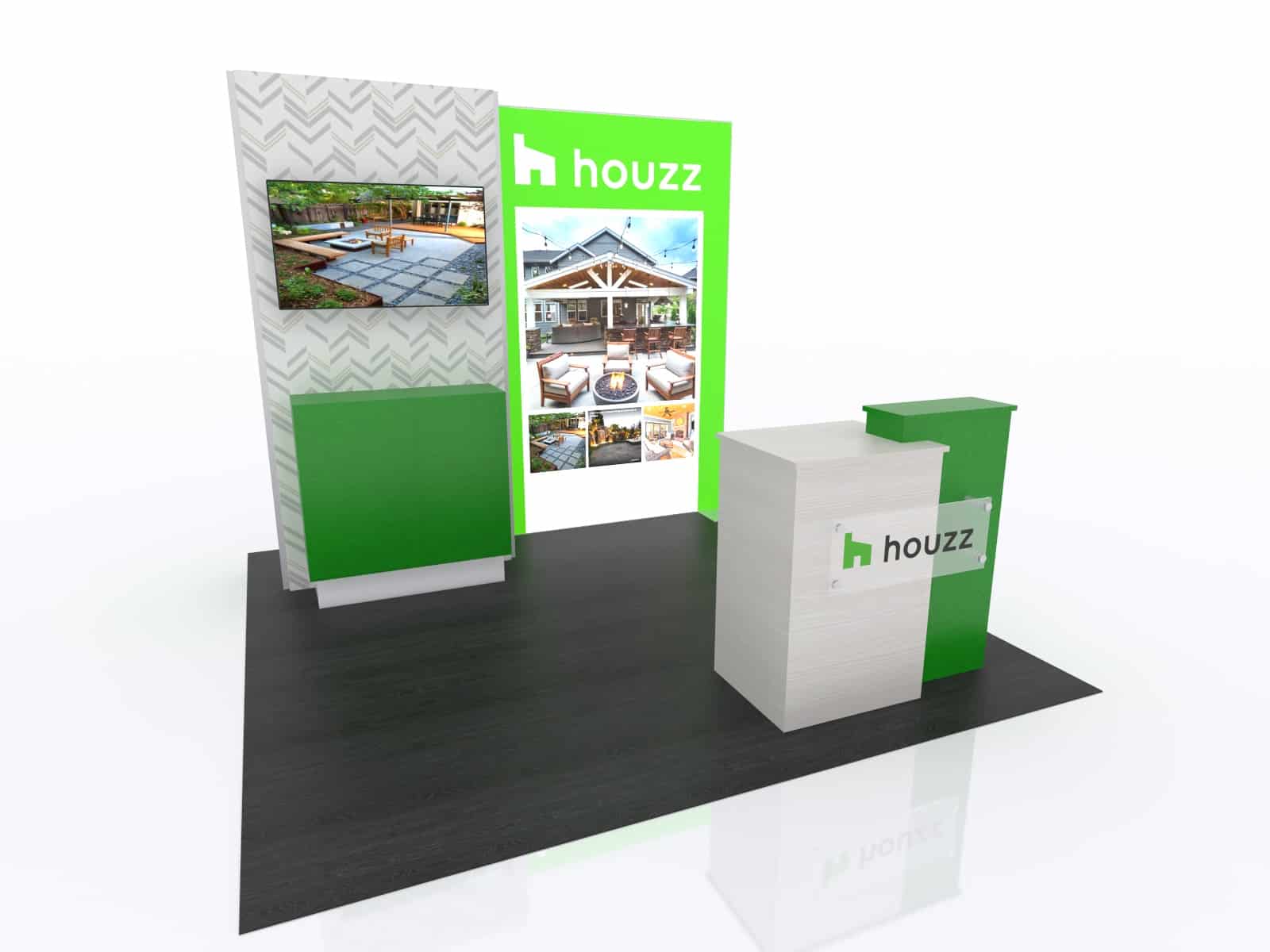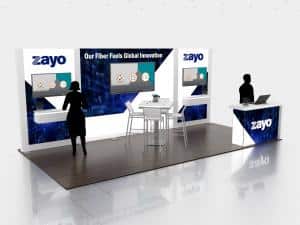Graphic Tip: Large Format Printing Design in Illustrator creates Small Files
Designing graphic files for large format printing can be intimidating for those who normally work on small sized layouts such as brochures, catalogs, magazines and so on. However, what you will find is that working on large trade show graphics can be, in many cases, simpler than most projects. It is just a matter of learning the tricks of the trade so you can take advantage of your computer’s system resources, regardless of OS.
One of the tricks to preparing large format printing designs is to use Adobe Illustrator as your layout program whenever possible. Creating as many objects in vector as you can will certainly provide smaller files. But Illustrator also has the ability to keep your system resources in check while incorporating large raster images and still generating small documents.
It is important that you follow a few guidelines when building your Illustrator files to make sure the document is manageable in size.
Some basic tips are:
(1) Always save your Illustrator files with the "PDF compatible" feature turned off.
(2) Save as .ai files, not as .eps files.
(3) NEVER embed your raster images. Always "link" the images and make sure you have turned off the "include linked images/files" feature when saving the Illustrator file. (This keeps that large raster file out of the Illustrator file, greatly helping to minimize the Illustrator file size.)
(4) Be sure to turn on the "compression" check box when saving your Illustrator file.
(5) Be sure not to select the "include linked files" option. (This would cause those raster files to be embedded, increasing the file size again.)
(6) Try to create intricate raster effects such as bevels, drop shadows and so on in Photoshop and then simply link a transparent PSD file to your Illustrator layout. Illustrator has some great raster effects. But, they slow systems down and make files large.
(7) Pre-scale all raster images in Photoshop to the desired finished size they should appear before placing them into Illustrator. IE: If an image should be 20” wide on the final layout, do not place a 10” wide image into Illustrator and then scale it up. Rather, scale it in Photoshop first. Then place it.
(8) The optimum resolution for placed raster images at 100% scale is 100ppi. Higher resolutions should be avoided (and will be resampled down to 100ppi prior to press time anyway).
(9) It may seem counter-intuitive at first, but it's almost always better to work at 100% scale in Illustrator whenever possible. Only work at a smaller size if the artboard doesn't support your finished size. If that is the case, use 50% scale as your first option, or 25% scale as your next option. If you do have to scale down, be sure to let the print tech know the details.
- Why work at 100% scale size in Illustrator?
- Because a properly prepared Illustrator file will be almost the same file size at 50% scale as it would be at 100% scale.
- When placing raster files into the Illustrator art layout, you won't have to scale them down - instead, simply preset the dimensions in Photoshop and place the files as needed.
- You won't have to worry about effects or point sizes not scaling properly - they'll all be set correctly already.
American Image Displays has prepared the following guide sheets on the right for making sure your Illustrator files stay as small as possible. This document provides some of the items listed above with screen capture diagrams. Check it out (and let us know if you have any questions as we are always happy to help):
For more quick tips on preparing large format printing files, check out the Graphics FAQ page at American Image Displays.



